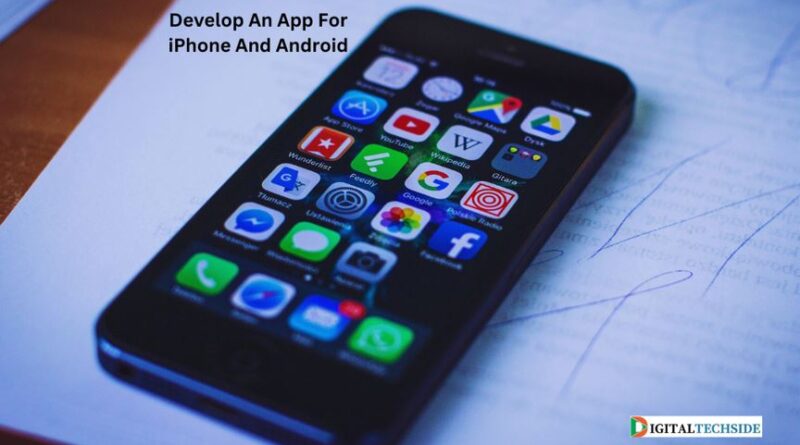Develop An App For iPhone And Android
Mobile applications are built differently, iPhone users and Android users have different features when it comes to mobile apps. The features and even the UI/UX design are comparatively diverse.
There are many types of operating systems, but Android and iOS are the two most widely found in the population. Each of them has millions of users across the globe. There must be a reason why you see each of them is loved and praised by so many people.
Similarly, when it comes to building apps, operating systems are deeply explored, and only then the applications are built. The apps that you have been using years ago are not built the same way as they are today. These days target audience is kept in mind and then only the apps and their features are built.
Mobile app developers are sometimes puzzled because Android and iPhone devices are developed with similar architecture. However, the strategies and designs are met with a different approach.
Hence, to develop the iPhone and Android Apps, the process is carried away by looking at the similarities and differences between the systems.
This blog will cover the major differences between both and will be discussed in detail.
These Are The Major Differences Between The App Development
There may be many differences but we are focused on only the complex ones and the major ones.
1. Programming Languages
iPhone and Android apps are built using different programming languages. Both systems are developed using a different technology stack. To build iPhone applications Swift and Objective-C are the programming languages used while to build Android apps, Java and Kotlin are required.
Moreover, if we compare both, developers find it easier to build iPhone apps. The reason is that coding is much more seamless and faster.
2. App Design
Both systems have different designs so obviously, the app design is also different. The user interface is completely or you can say sort of changed and appears quite different. Android has a customizable UI design allowing users to do as they please with the apps. On the contrary, iPhone users are restricted to the system default and the app’s default settings. The layout and navigation are usually different.
Take an example of the Facebook application, the interface is different than that of Android devices. Also, the animation is comparatively better on iPhone than on Android. The fonts, colors, themes, and icons.
Users feel like the app design of the iPhone is more aesthetically pleasing than Android. Apple has complex yet soft animations meanwhile the Android apps have a sharp feel
3. Testing
Since Android is an open-source system, it gives you more flexibility than iPhone app testing. There is more room for customization and testing approaches. On the other hand, iPhone apps are built with closed-source systems so there is less flexibility when it comes to iPhone.
In addition to this, when it comes to predicting errors and bugs, Android apps can be less predictable as to how they will behave on the devices. On the contrary despite the less customization, there is more flexibility and the errors and bugs can be detected and predicted.
Also, when it comes to testing for app distribution, the apps take more time and the process is slow in the iPhone stage but Android apps are tested faster and the process is fast. It all depends on the app distribution channel when it comes to testing and submitting the apps.
4. Back Button
The going back buttons in both iPhone and Android are also built differently. iPhones do not have a back button so the apps designed for iPhones have a navigation option that allows users to go back by tapping the back option. Meanwhile, Android devices have back buttons so the apps do not require to have a specific back button. Simply tapping the back button will take the users to the previous page.
If you look at iPhone users, are used to tapping the screen to go back, but when an Android user holds an iPhone and uses the apps in there, they will try to touch the back button down.
5. App Distribution Channel
The app distribution channel also differs in the sense that apps available for iPhone cannot be found anywhere else but only in Apple Stores. If you look at the Android apps, they can be downloaded from any app store and not just Google Play Store. Just like Android and iPhone, you will find the Samsung app store at well right top of Google Play Store as they have developed apps for devices that work better on Samsung devices.
To compare, Android app stores have more options than iPhone stores.
Conclusion
To sum up the blog, this was all about the differences between the Android and iPhone applications.

As a DIGITALTECHSIDE author, the majority of our articles have been focused on technology, blogging, business, lifestyle, social media, web design and development, e-commerce, money, health, education, entertainment, SEO, travel, and sports.
Contact us at digitaltechside@gmail.com if you have questions of anything.




